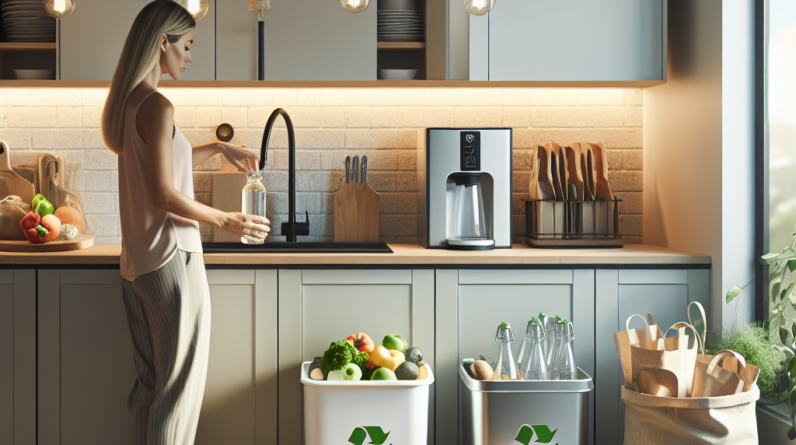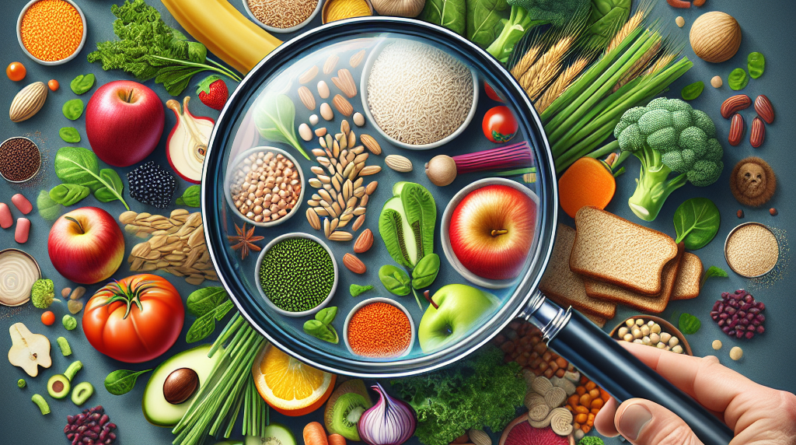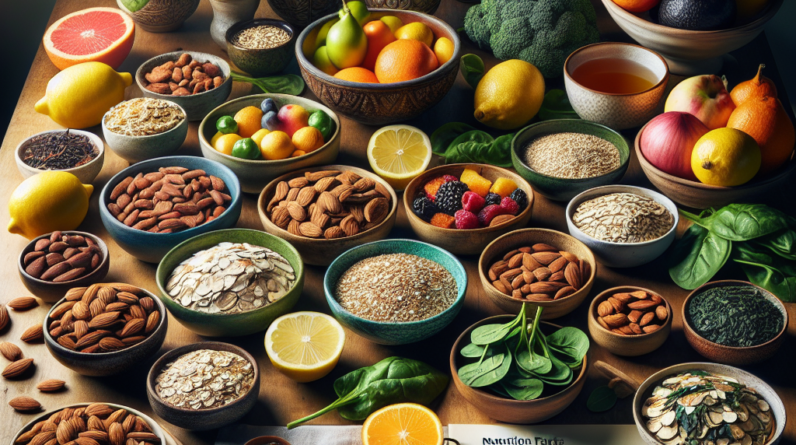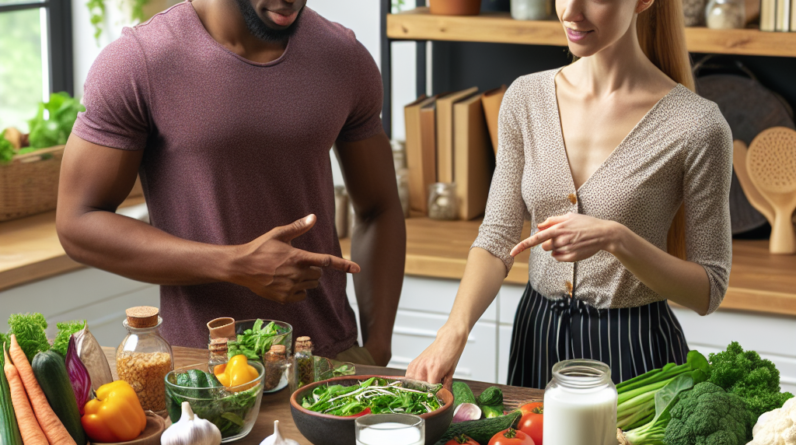
1. Reduce Food Waste
Understanding Expiration Dates
First things first, let’s chat about those expiration dates! Most of us think of them as hard stops—but they’re more like guidelines. Many products can be consumed well after those dates. For example, dairy can sometimes go a few days past the sell-by date if it looks and smells okay. I usually do a great ol’ sniff test. If it passes, I’m good to go!
Get a Huge Discount and Bonus! Try for 90 Days Risk Free
Getting familiar with the difference between “sell by,” “use by,” and “best before” can seriously save food from the bin. By educating ourselves about these terms, we can better manage what we buy and cut back on unnecessary waste. Make it a habit to check your fridge before shopping to avoid buying duplicates of what you already have.
Another handy tip? When buying fruits and veggies, don’t overlook the ugly ones! They might not look as appealing, but they often taste just as delicious as their perfect counterparts. Keep in mind that minor imperfections shouldn’t hinder their chance of making it into your kitchen.
Smart Meal Planning
Meal planning is like the Swiss army knife of waste reduction. Seriously, when I sit down once a week to map out our meals, it’s a game changer. I start by checking what’s already in the pantry and fridge. This way, I know what ingredients I should use before they go bad.
Also, I try to use leftovers creatively. If I whip up a big batch of chili one night, I’ll plan to use the leftovers for chili nachos the next day. Not only does it clear out the fridge, but it saves time during busy days—double win!
Apps can give meal planning an even bigger boost! There are plenty of USDA-endorsed apps that help identify food items nearing their expiration. I personally love having everything organized digitally, plus it reminds me of what I have before hitting the grocery store.
Portion Control
I can’t tell you how many times I’ve overfilled my plate and ended up scraping edible food into the trash. Part of reducing waste is recognizing the portions we serve. It’s all about finding balance. I’ve found that serving smaller portions can help gauge what I actually eat, since I’m less likely to waste food this way.
It’s fun to test out ‘family style’ dining. Instead of plating everything, I fill serving dishes and let everyone take what they want. This not only helps in waste reduction but also sparks conversations at the dinner table.
Lastly, you can always save uneaten portions for the next day’s lunch or dinner. Invest in nice glass containers—trust me, they’re great for storing leftovers and giving a second life to your meals without being wasteful.
Get a Huge Discount and Bonus! Try for 90 Days Risk Free
2. Make the Most of Leftovers
Creative Cooking
Using leftovers creatively has become my signature cooking style! Leftovers don’t always have to be served the same way twice. I like taking leftover roast chicken and transforming it into tacos. A simple change like that completely revamps the taste and feels like a new meal!
Also, consider repurposing vegetables into smoothies or soups. Got some wilting spinach or mushy bananas? Blend them up! Not only do you use them before they go bad, but you’re also getting some nutritious boosts into your diet.
Think outside the box when it comes to using up your fridge. If you have a mix of odds and ends, toss them together for a breakfast frittata or a stir fry! The more creative you get, the less food will go to waste.
Practice the Freezer Magic
Let’s talk freezing! This is one of the best ways I’ve found to combat waste. If you know you can’t finish food in time, pop it right into the freezer! I dedicate a portion of my freezer for bread, leftover sauces, and even fruits for smoothies.
Need a Serious Energy BOOST? Huge Discount Try for 90 Days Risk Free
Labeling is key when it comes to freezing food. I always write down what I’m putting in and the date. That way, I avoid “freezer burn” situations or losing track of what’s in there. No one wants mystery food to haunt them!
Thawing is easy if you plan ahead. I usually take what I want to use the night before and stick it in the fridge. By breakfast, dinner is basically prepped! This simple act not only saves food but it really simplifies my cooking routine.
Sharing the Love
If you’re like me and sometimes overestimate needs at potlucks or gatherings, consider sharing leftovers with friends or neighbors. It’s a lovely way to connect with others and ensure food doesn’t go to waste. I can’t tell you how many cheerful texts I’ve received when I gift baked goods!
Set up a weekly sharing circle with fellow food lovers to exchange extra food items you don’t plan on using. It creates such a festive community vibe and helps eliminate waste. Plus, you get to try new things from others’ kitchens!
Community fridges can be a great way to share surplus food. They’re popping up everywhere, and it’s such a cool way to connect while contributing to waste reduction in a larger sense.
3. Composting and Recycling
Starting a Compost Bin
Composting has made such a difference in my kitchen waste. If you’re unsure where to start, I recommend getting a small compost bin for your kitchen. Starting with vegetable scraps, eggshells, and coffee grounds is simple enough, and you’ll be surprised by how much you can collect!
Compost contributes back to the earth; turning waste into nutrient-rich soil is simply magical. I like to garden, so having my compost ready to go is such a perk for my plants. Plus, it gives me that warm fuzzy feeling knowing I’m reducing my carbon footprint.
It doesn’t have to be complicated, either! I’ve seen people build DIY compost bins in their backyards or even use a simple bucket. And if you don’t have space for a bin, check for local composting options in your area. You might find community programs to help!
Understanding Recycling Guidelines
Recycling your kitchen waste properly means becoming a detective—checking labels, understanding materials, and knowing what can and can’t be recycled. I keep this one-page guide stuck to the fridge so I can check before tossing something in the bin.
Another trick is to rinse out containers before recycling. I learned the hard way that greasy pizza boxes are among the items that can’t be recycled. Who knew? It’s a good habit to give recyclables a quick wash before letting them meet the bin.
Finally, I like to make a conscious effort to choose products with less packaging or eco-friendly packaging. Whenever I can, I opt for bulk options—a win for my wallet and the planet!
Finding Eco-Friendly Products
When it comes to replacing kitchen supplies, I think about durability and sustainability. Switching out plastic containers for glass or silicone storage options is a game-changer! They not only last longer but are also great for reheating food without leaching chemicals.
Good Health Solution is Easier Than Most People Think!
Take a Look for Yourself!
Another clever trick is investing in reusable cloths and towels instead of paper towels. Not only do they minimize waste, but they save money in the long run! I keep a basket of reusable cloths handy for spills and kitchen chores.
Keep an eye out for new eco-friendly gadgets that help promote sustainable practices. From bamboo utensils to compostable dishware, the options are continually growing. I love sharing my finds with friends and encouraging them to make small, eco-conscious shifts!
4. Choosing Sustainable Ingredients
Local and Seasonal Shopping
I’ve found that shopping for local foods not only supports farmers in my community but also helps cut down on transportation emissions. Farmers’ markets are such a fun outing, too! I enjoy meeting the people who grow my food and discovering what’s in season.
Eating seasonally means incorporating fresh produce at its peak flavor, which often leads to tastier dishes! Something about biting into a ripe tomato in summer just hits differently than one shipped from far away.
Plus, seasonal shopping assists in avoiding out-of-season foods that may not go well in my recipes. Emphasizing local and seasonal leads to a healthier diet while reducing the environmental impact of your kitchen.
Organic Choices
While I might not go completely organic, I do try to choose organic options, especially for the “Dirty Dozen” items. It feels good to know I’m avoiding pesticides on the foods I consume regularly. Plus, organic practices often promote healthier soil, which means better food for the planet.
It’s all about making informed choices. I read up on brands and their farming practices to ensure they’re genuinely organic and sustainable. The more I know, the better choices I can make in supporting them!
Sometimes it can be a little pricier, but it’s about aligning my values with my purchases. I believe in putting my money where my mouth is when it comes to environmentally friendly options.
Reducing Processed Foods
Processed foods have a significant impact on packaging waste and environmental harm. I can’t help but notice that the healthier I eat, the less packaging I deal with! Cooking from scratch can also be a fun and rewarding experience.
Learning to read food labels helped me significantly. It’s so easy to buy convenience food, but taking a moment to evaluate what’s on the label sparks my creativity in the kitchen.
Plus, think about how much better I feel when I eat whole foods. I love sneaking in more fruits, veggies, and grains into my meals while cutting back on heavily packaged and processed items. Not only is it better for me, but it’s better for our world too.
5. Educating Yourself and Others
Staying Informed
To really drive the shift toward reducing waste, I believe in continuing to educate myself. There’s always new strategies or small changes to make that can lead to significant impact. I love listening to podcasts or watching documentaries on sustainability to stay inspired.
Books can also provide deeper insights. I’ve found numerous actual hands-on books that dive into sustainable kitchen practices—these resources have helped me expand my knowledge and reevaluate my habits.
If you know of local workshops or webinars that focus on kitchen waste reduction, go for it! Sharing these experiences is just as important as implementing them yourself.
Involving the Family
Making it a family affair makes the whole process fun. I loop my kids into meal planning and teach them why it’s essential to minimize food waste. Kids can be amazing advocates for change if you arm them with knowledge from a young age!
Set challenges, like seeing who can come up with the best leftover recipe or turn off unnecessary lights after use. It’s sweet to witness them taking ownership of their responsibilities to the planet.
Outdoor education also comes into play. I try to take my family on trips to farms and local markets. It builds appreciation for fresh produce, making waste reduction a natural outcome of knowing where food comes from.
Becoming an Advocate
As you grow in your sustainable journey, reach out to others! Share your enthusiasm and tips with friends and family. I’ve seen educating others creates a ripple effect, and it feels great to be part of a larger conversation on waste reduction.
Involved in community programs? Advocate for better food policies, recycling programs, or organic school lunches. Small efforts on a community level can lead to change in larger production practices.
Lastly, utilize social media to spread the word. Whether it’s an Instagram post about your compost pile or a Facebook discussion on the importance of local produce, advocacy can empower others to join the cause.
FAQs
1. How can I get started with reducing food waste?
Start by assessing your shopping habits. Planning meals ahead, checking what you already have, and using leftovers creatively are great first steps. Keeping track of expiration dates helps prevent unnecessary waste!
2. Is composting difficult?
Not at all! You can start with a small kitchen bin for scraps. Composing just requires some basic knowledge and a bit of patience as it breaks down. It’s worth it, as it reduces waste and enriches your soil.
3. What can I do with leftover food?
Get creative! Leftover food can often be transformed into new meals. Think stir-fries, soups, or even smoothies for fruits/veggies that are on their way out. The key is to avoid repetitive meals by adding variety!
4. How do I choose sustainable kitchen items?
Look for durable, reusable products that limit waste, like glass containers, beeswax wraps, and cloth instead of paper towels. Also, prioritize items made from sustainably-sourced materials when possible.
5. How can I educate others on reducing kitchen waste?
Share your knowledge! Have open conversations about food waste with friends and family. You can also organize events or participate in community programs focused on sustainability and kitchen waste reduction.







